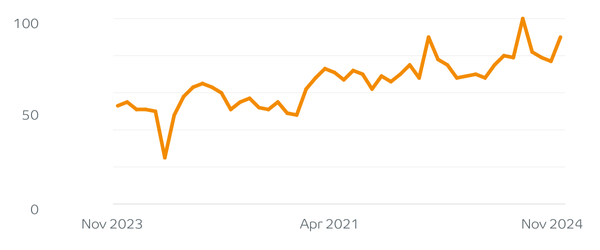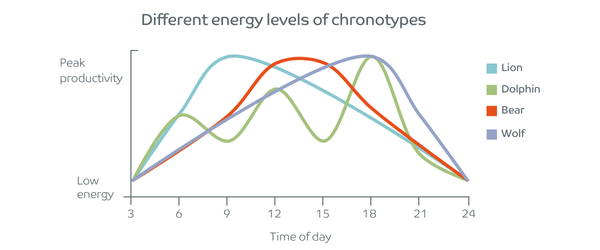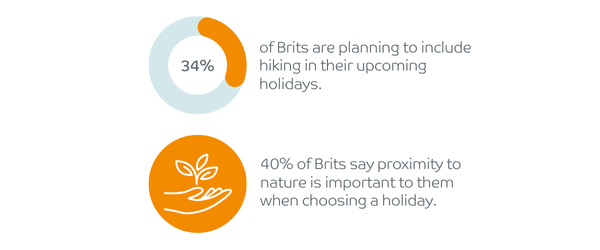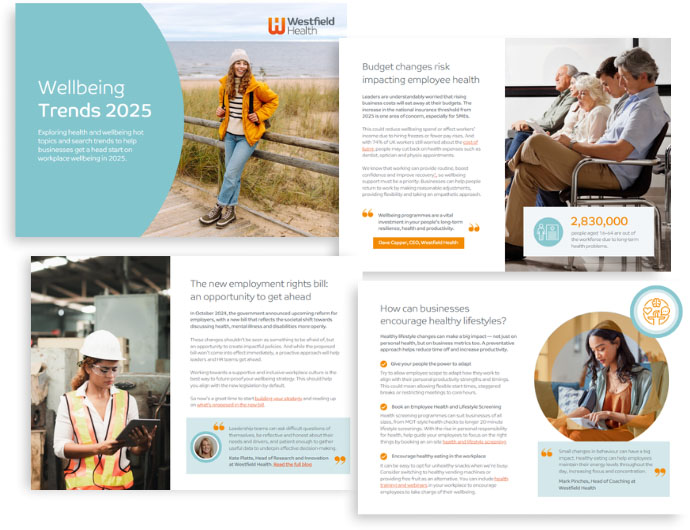In our Wellbeing Trends 2025 report, we explore workplace trends and topics, including the long-term absence crisis, hyper-personalisation in the workplace, turning wellbeing awareness into action and physical wellbeing.
As 2024 draws to a close, we are experiencing conflicting attitudes towards health. More personal responsibility is being taken towards maintaining and improving mental and physical health, but is this a ripple effect from NHS wait times and the long-term sickness crisis?
As we enter 2025, businesses will be looking towards new developments in hyper-personalisation to make the most of employee productivity as well as embracing the rise in self-awareness relating to work schedules, communication styles and workplace wellbeing strategies.
The report pulls together insights from Google search data, national statistics, social media, consumer trends and new research. So, what are 2025’s biggest wellbeing trends?
Trend 1: Tackling the long-term sickness crisis
Long-term sickness has become a crisis in the UK with these absences reaching 20-year high. Google search trends show a huge increase in searches for ‘sick leave’ as more people are signed off work on long-term leave.

Google search trend for ‘Sick leave’
The Office for National Statistics found the most common reasons for long-term absence:
- Depression, mental illness or anxiety (27%)
- Musculoskeletal issues (23%)
- Other health problems or disabilities (15%)
Responsibility is split across the government, the NHS, businesses and individuals. While many employers provide stress and mental health support, it’s not always effective. There are still steps to be taken to help solve the crisis. Two key areas for leaders are preventative healthcare and healthy lifestyle choices.
Trend 2: Hyper-personalisation and biohacking
With each person having different physical health needs, lifestyle patterns and diets, hyper-personalised health is booming in the UK. The use of health tracking apps continues to grow as over 67% of people in the UK self-monitor at least one element of their health.
Another biohacking trend sees people seeking ways to improve their energy levels throughout the workday by personalising their nutrition, lifestyle and working conditions to boost their energy. This includes becoming in tune with personal chronotypes to find match their daily activities with their energy levels and productivity spikes:

Trend 3: Turning awareness into action: future-proof wellbeing policies
The Employment Rights Bill 2024-25 was introduced in October 2024 with a new reform that reflects the societal shift towards discussing health, mental illness and disabilities more openly.

And while the proposed bill won’t come into effect immediately, a proactive approach will help leaders and HR teams get ahead. Aligning workplace wellbeing, inclusive cultures and supportive teams with this new bill is an opportunity to create more impactful policies and prioritise employee health and wellbeing.
Trend 4: Physical wellbeing – nature and nurture
Nature has been at the forefront of minds since Covid-19, with 45% of adults in the UK spending more time outdoors compared to before the pandemic. The great outdoors has even found itself affecting the choice of holiday destination and activities for people booking holidays.

This trend doesn’t end here – physical activity is being used as a way to boost mental wellbeing due to the increase in mood and mental focus. Additionally, more people are using fitness as a form of socialising with friends and meeting new people.
Download the full report for free
Our Wellbeing Trends 2025 report features an in-depth look at these key health and wellbeing themes.
It uses data from Google search trends, the NHS, consumer trends and Westfield Health’s wellbeing research to help business leaders, managers and HR teams get a head start on workplace wellbeing in 2025.

View the Wellbeing Trends 2025 report